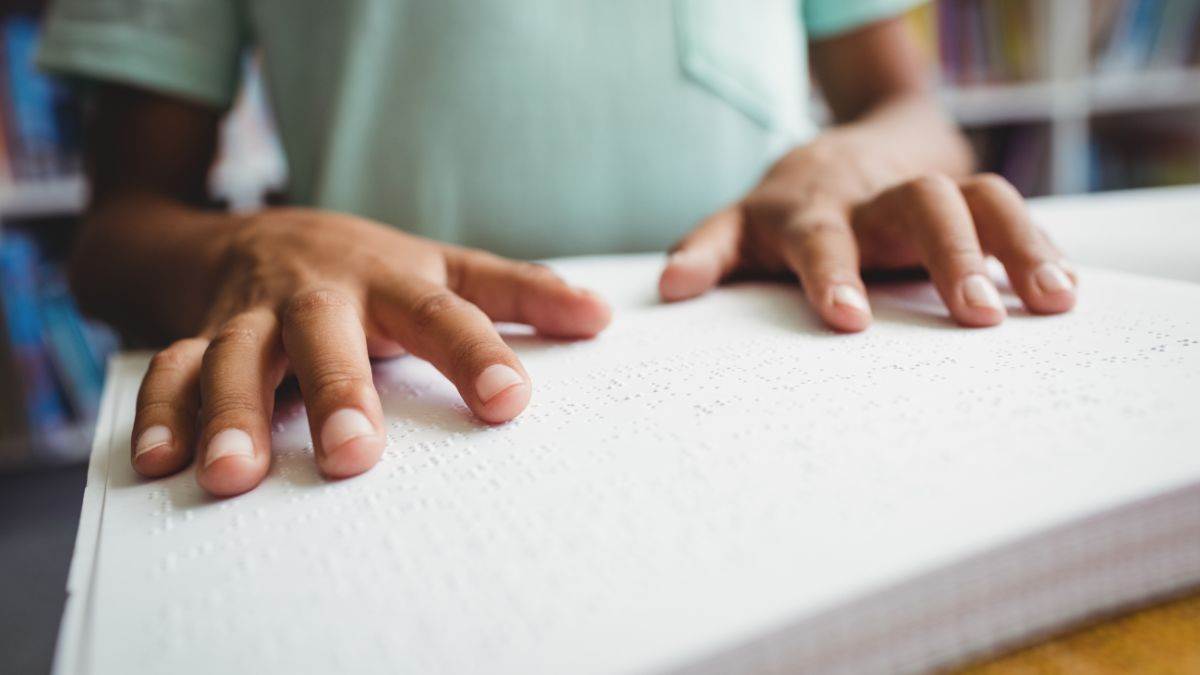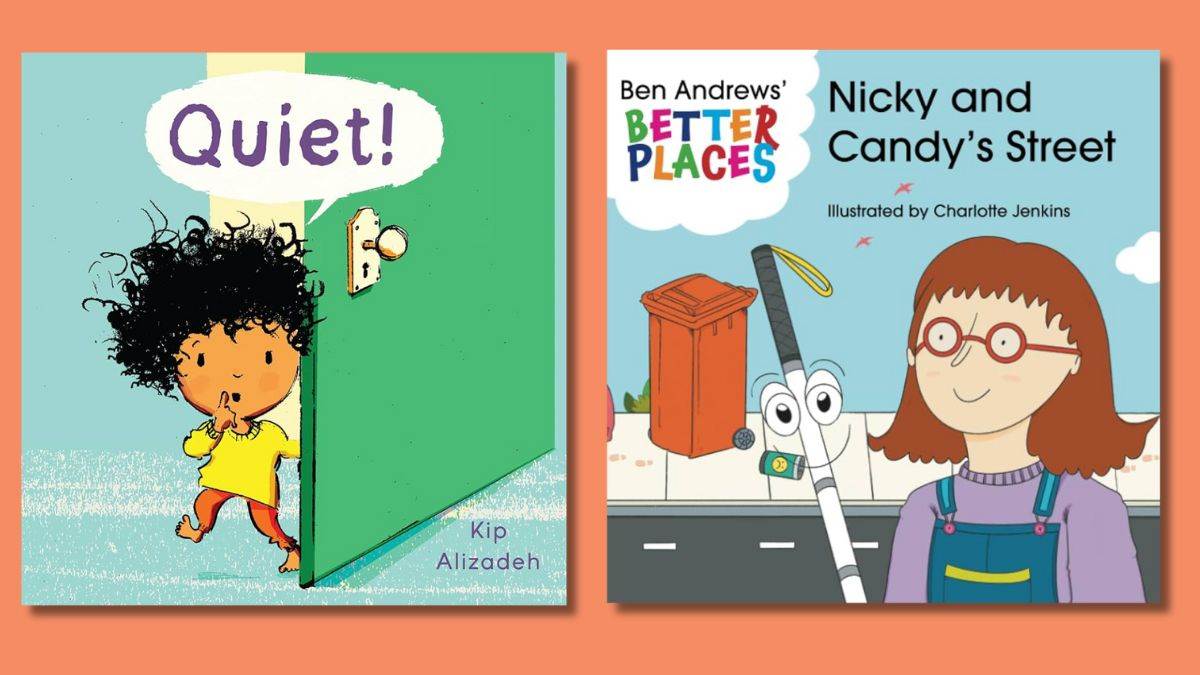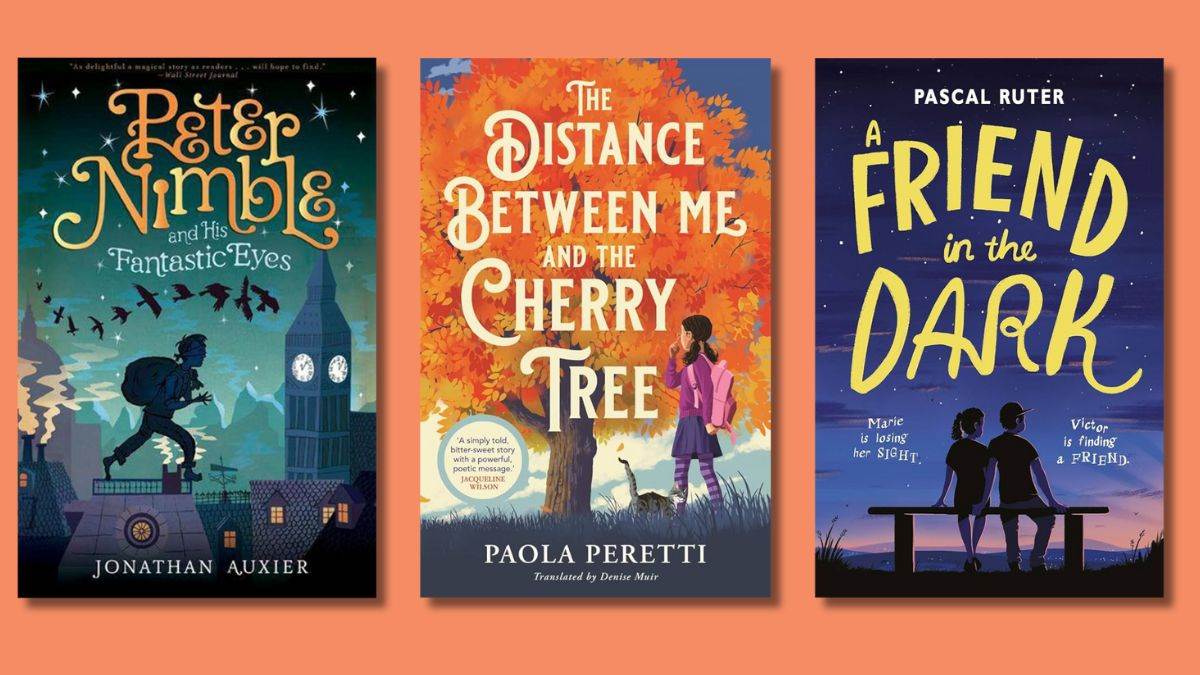Engaging children with vision impairment in stories
Published on: 20 February 2024
Get useful tips and ideas from the RNIB to help you support blind or partially sighted children in school.

Across the UK, it's estimated that around 25,000 children aged 0-16 have a vision impairment: that's 2 children out of every 1000 who may require a high level of specialist provision to learn on equal terms with their sighted peers*.
Severe vision impairment (blindness) in children is very rare, so it's likely that many schools will have little to no experience of supporting a child who has very limited vision. Vision impairment alone should never be a barrier to academic success, though, and it certainly shouldn't prevent a child from developing a love of books and reading.
Ask the experts
When considering how best to support a child with vision impairment, it's important to speak to the specialists first - alongside being led by the young person themselves, of course. Qualified Teachers of Vision Impairment (QTVIs) hold additional qualifications to enable them to assess, plan for, and deliver quality teaching interventions for children with vision impairment.
Right from the early years and throughout their education, the QTVI will take a key role in supporting a child through the process of learning to read according to their individual needs, using different materials and helping them develop the skills most relevant and useful to them. The child's QTVI should always be consulted before choosing reading materials or making plans for any reading activities.
Make use of great resources
In terms of encouraging reading in a child with vision impairment, accessibility is key. Whatever adaptations a child needs - from straightforward enlargement to the provision of audio materials and/or books produced in Braille - the services of charities like RNIB and Guide Dogs can help with these.
Other organisations such as Living Paintings and ClearVision Project incorporate tactile and auditory experiences to really bring stories alive for children with vision impairment. Most of these services are available to schools and libraries, as well as to individual families.
Make it fun
In the early years, children with vision impairment can be encouraged to engage in reading in much the same way as any sighted child. By sharing simple, repetitive songs and rhymes with babies and talking about the world around them, parents, librarians and early years practitioners help children discover the wonder of everyday life and encourage a desire to create stories from their own imaginations, thus developing early literacy.
Make it multi-sensory
The best way to engage a child with vision impairment in story times is to adopt a multi-sensory approach. One parent, when asked about storytelling in their household, told us:
"We use objects related to the characters, dress up in costumes or fancy dress or even funny hats. We've even used a spritz of perfume for characters or different pieces of fabric to indicate their clothes. Use pots and pans to make onomatopoeic words ('Bang!' 'Crash!' 'Whoosh!'). Use all your silliest voices for each character...let those dramatic juices flow."
It's important to understand that, for children with vision impairment, their conceptual understanding of the world can take longer to develop and will require purposeful exploration, which is why including a range of sensory experiences such as those described by the parent above is so important when engaging in reading activities.
Story sacks – which can be bought ready-made to accompany a text or put together from objects in the home or around school – are a wonderful way to make story time more interactive and meaningful for children with vision impairment.
Try audiobooks and resources
For some children, it's all about listening. Audiobooks appeal to sighted readers for the way they fit seamlessly into busy modern life but, for children with vision impairment, they can be a game changer. Another parent told us:
"My son has no vision at all so it's been really hard to engage him in sitting with a book; he's more interested in auditory activities than touch/feel type. However, he absolutely LOVES audiobooks, probably because they have lots of sound effects and music alongside the story, which brings it to life a lot more than I can reading to him!"
Make it inclusive
Finally, for many children, being able to find themselves represented positively in books can have the most profound impact on their self-esteem. Choosing books that portray characters with vision impairment in a sensitive and non-patronising way is really important and can be a crucial way of ensuring that the child with vision impairment feels included.
It can also help their classmates develop a better understanding of the lived experiences of people with different needs and abilities.
Books recommended by the RNIB
EYFS/KS1

Quiet! by Kip Alizadeh
Ssh! Listen. What's that noise? What can we hear when we're really, really quiet? A toddler enjoys the range of sounds they hear as their busy day comes to an end, from the bustle and chat of dinner time, to the quiet hush of their father's voice at bedtime.
The text and sensory clues to be found in this enchanting, inclusive picture book allow us to experience our home through its many noises. Auditory landmarks help all children to become familiar with daily routines, and can be particularly important to those who are blind or partially sighted.
Nicky and Candy's Street by Ben Andrews
Candy is a tall, thin white cane Nicky uses to get around, but when a trip to a friend's house proves difficult, can you work with Candy to make the street a Better Place?
The Better Places series has been written to help highlight the issues disabled people currently face to children, parents and educators whilst providing an outlet to take positive action. Introducing these concepts at an early age will increase understanding as they grow into adults to support a more accessible, inclusive and better future.
KS2

Peter Nimble and His Fantastic Eyes by Jonathan Auxier
Peter Nimble and His Fantastic Eyes is the utterly beguiling tale of a 10-year-old blind orphan who has been schooled in a life of thievery. One fateful afternoon, he steals a box from a mysterious traveling haberdasher — a box that contains three pairs of magical eyes. When he tries the first pair, he is instantly transported to a hidden island where he is presented with a special quest: to travel to the dangerous Vanished Kingdom and rescue a people in need.
Along with his loyal sidekick — a knight who has been turned into an unfortunate combination of horse and cat — and the magic eyes, he embarks on an unforgettable, swashbuckling adventure to discover his true destiny.
The Distance Between Me and the Cherry Tree by Paola Peretti
Mafalda is a nine-year-old girl who knows one thing: some time in the next six months her sight will fail completely.
Can Mafalda find a way through a seemingly dark future and still go to school, play football and look after her beloved cat? With the help of her family, and her friends, Mafalda needs to discover the things that will be important to her when her sight has failed.
A Friend in the Dark by Pascal Ruter
Victor is a failure at everything – school, girls, making his dad feel better about his mother having left them. When Marie-Jose, the smartest girl in the class and a musical prodigy, starts helping him with his maths homework, there must be something she wants in return. What he doesn't know is that Marie-Jose is rapidly losing her sight and she needs a friend now more than ever.
Find more reading recommendations
More useful links and information
- RNIB Bookshare: RNIB Bookshare is a UK education collection of books, images and braille that can be read by learners with a print-disability.
- RNIB Talking Books: Talking Books is a free service giving access to fiction and non-fiction books for adults and children.
- Guide Dogs - Custom Eyes: Books are custom made, with font size, spacing, colour and more all tailored to the child's individual needs.
- ClearVision Project: A postal lending library of children's books in print and braille, and tactile books.
- Living Paintings: Living Paintings design, create and publish tactile and audiobooks for blind and partially sighted people.
- Seeing AI: Seeing AI is an artificial intelligence app that allows people to take a photo and have a description of the item read to them.
- Voice Dream Scanner: Voice Dream Scanner is an app that allows you to scan paper documents, labels and signs with a camera and recognise the text. There is a cost to the app.
*More information about the prevalence of vision impairment in children in the UK can be found on the RNIB website here.





